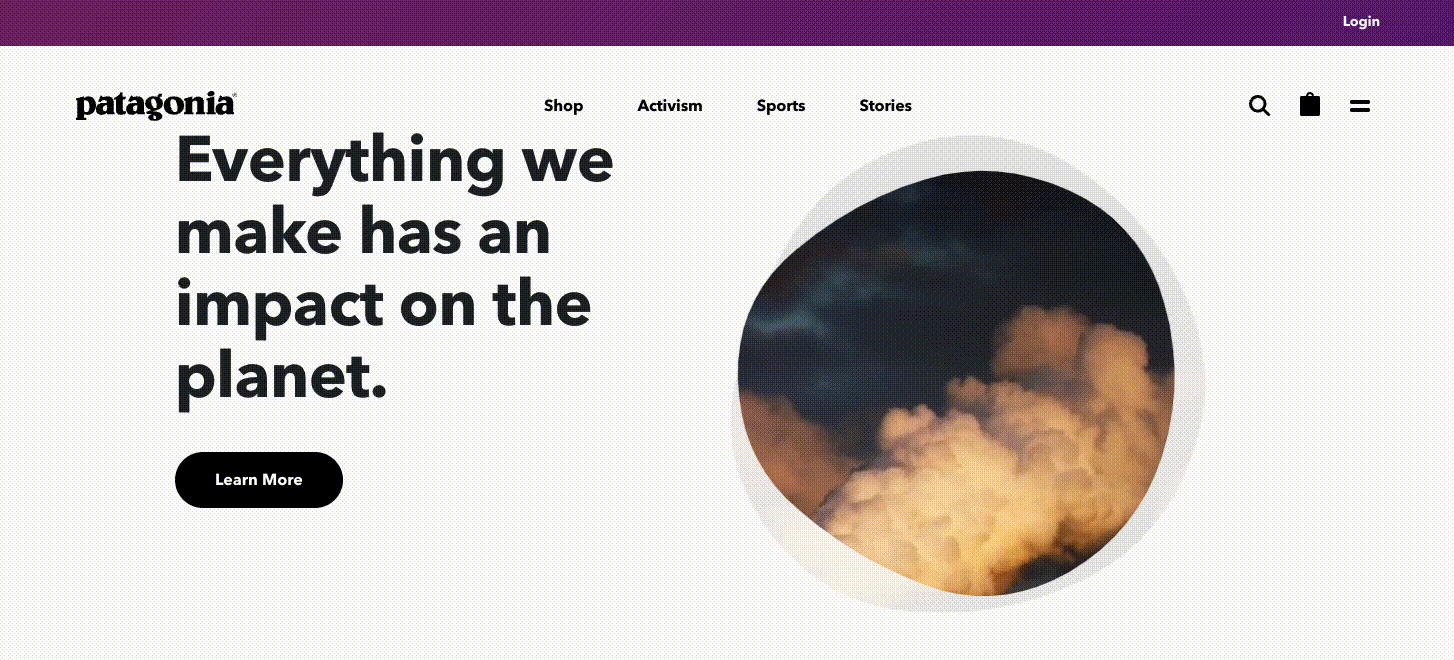
4 Sustainable Marketing Examples That Work

As the earth’s temperatures continue to rise, so does the consumer demand for eco-friendly products and ethical business practices. If you want to compete in this market, using good sustainable marketing strategies to show the world what your company is doing to positively impact people and the planet is imperative.
Crafting sustainability messages is often easier said than done. You have to combine the right ingredients in the right combination so that you convey your brand's commitment to sustainability initiatives while authentically reinforcing your brand in a way that resonates with your customers.
That's a big undertaking, so let's take it one bit at a time. First, analyze other companies' sustainable marketing strategies. What brands do it well? What do your competitors' sustainability efforts look like?
To get started, let's examine four examples that make green marketing look as easy as pie. These should prompt ideas for creating or refining your sustainable marketing message and plan.
4 Sustainable Marketing Examples
1. Apple®: Amplifying Your Eco Voice
 The Apple logo is one of the most recognizable in the world. Unlike some of the abstract symbols we see in other logos, the apple is a tangible, everyday object that our brains recognize instantly without effort.
The Apple logo is one of the most recognizable in the world. Unlike some of the abstract symbols we see in other logos, the apple is a tangible, everyday object that our brains recognize instantly without effort.
Words are symbols that create images in the mind. Apple cuts out this middleman by letting images tell part of the story of its webpage dedicated to the environment. Through images, they show us rather than tell us that the company is harnessing the power of nature to make their products. This gives the brain a break and also connects the company to the environment in our minds. Juxtaposition is powerful!
Apple carefully selects the words it does choose to feature on this page. Earlier versions of this page used more activist language: words like “fight” and phrases like, “every voice matters.” These speak to readers as egalitarian, social justice warriors who wants to be heard and wants everyone else to be heard as well.
But they've since shifted their tone to one of mutuality and partnership, with emphasis on terms like 'sharing,' 'helping,' 'progress,' even 'partnership' itself. The idea is that people do more together than they do as individuals, a common, yet effective theme in many environmental awareness campaigns. After all, I may not change the world, but we might be able to.
Considering that the company literally allows us to be heard by making one of the most popular communication devices on the planet, this message is an authentic invitation for people to join their sustainability efforts by being part of the solution through, by implication, buying their products. It's a savvy move.
2. Lego®: Building Trust and a Sustainable Future
 As soon as you land on Lego’s sustainability page, you’re greeted by the image of a child at play. Their mission statement appears just below:
As soon as you land on Lego’s sustainability page, you’re greeted by the image of a child at play. Their mission statement appears just below:
“We strive to play our part in helping build a sustainable future and create a positive impact on society and the planet, which children will inherit.”
A beautiful cake is dependent on all of the ingredients that went into it, so let’s look at each piece of this statement to see why it has so much power.
Part 1: “We strive to play our part…”
Manufacturers create a large source of the world’s greenhouse gas emissions. Lego is taking responsibility without using the word 'responsibility.' Instead, they use the word “play,” an apt choice for a toy manufacturer.
Part 2: “...in helping build a sustainable future...”
Although many companies use the word 'building' in connection with sustainability, Lego practically invented the word. Again, they’re connecting what their brand is known for with their mission to bring sustainable products to market.
Part 3: “...create a positive impact on society and the planet, which children will inherit.”
They don’t just stop at helping the planet. They pull on our heartstrings by mentioning children and make you feel like a complete jerk if you don’t care what kind of mess you might leave behind for them and all of their descendants. Since Lego is a toy manufacturer, it also reinforces the brand by circling back to children at the end of the .
This is a well-crafted example of sustainable marketing. And that’s only one section of the page!
3. Patagonia®: Making a Positive Impact on the Planet
While the apparel industry is notorious for low wages and poor working conditions, this producer of outdoor gear has earned a reputation as a sustainable clothing brand. Here are a few reasons:
- They voluntarily submit to rigorous audits of their supply chain and publish the information, regardless of how poorly it might reflect on the company. Then, they do something about it.
- They donate a percentage of their sales to help the natural world
- They focus on long-term impact over short-term gains
While Lego didn’t start out as a sustainable business, Patagonia has always focused on doing good things for the planet while still making a profit, proving you can have your cake and eat it too. Let’s take a look at their carbon footprint page:

The first thing you see is the above message with a video reel to the right that shows positive and negative images, such as factories emitting smoke and people spending time in nature.
Like Lego, they are claiming responsibility for their actions while being true to their brand. They could have easily said, “Everything we make has an impact on the planet.” That’s more abstract and therefore less powerful. It’s also more common to use the word 'make' to describe something we’ve created with our hands, reminding us of a simpler time.
The word 'impact' has the idea of powerful movement attached to it, which is appropriate for their customers, who lead active lifestyles that may involve high-impact activities. Both 'make' and 'impact' are much easier to visualize, especially when those ideas are reinforced by the video on the right side of the page.
Finally, they use the word 'planet' as the unfortunate object of our irresponsible actions, including their own.
4. e2Companies: Leading the Charge With Energy Innovation
While the above companies are known globally because they market to consumers, there are many businesses in the B2B space working hard to address environmental issues.
The energy field, in particular, is evolving at lightning speed, which is why we’re honored to showcase e2Companies’ much-needed technology that enables businesses to make measurable strides on the path to net-zero while protecting their bottom line from power outages and blips.
Their recent publication, "Grid Modernization: How Virtual Power Plants Are Shaping the Global Energy Transition," was created in response to a new report on the topic by the Department of Energy.
In this piece, e2 makes the urgent case for the businesses to act now and then breaks down the long DOE report in more accessible language that emphasizes the pivotal role of VPPs in addressing the increasing demands on the electric grid while promoting environmentally responsible practices.
After highlighting VPPs' numerous benefits, e2 introduces the reader to Virtual Utility®, which offers many benefits of VPPs and more. Through a visually-appealing and scannable chart, they make a compelling case for choosing their offering:
e2Companies' overarching sustainable marketing strategy uses the transformative potential of virtual power plants as an entry point for their own innovative Virtual Utility® solution.
[Sustainable] Food for Thought
Now that we've reviewed sustainability marketing efforts ranging from the world's most popular brands to ambitious companies with innovative, climate-minded technology, take a look at your own company's stance on climate change and environmental concerns and the steps you're taking to do your part.
Even service-based, paperless companies can still play a role. For example, your company could support environmentally focused nonprofit organizations through donations or volunteerism.
If you already have a sustainable marketing strategy and message, reevaluate it. Does it reflect your company’s values, your customer’s values and your brand all in an authentic way?
While Lego’s appeal to helping children will emotionally resonate with its customers, that same message could fall flat with the outdoorsy, nature-loving Patagonia customers who may or may not have children. Apple’s message reinforces its commitment to social justice, on which it spent millions in 2020.
While e2Companies solutions don’t directly impact the everyday consumer, they can save companies from substantial losses due to power instability while also helping the planet.
The key ingredient in all of these? Strategic authenticity. All of these companies carefully selected the images and words that not only reflect their brand and mission but appeal to their customers and therefore their bottom line.
Regardless of your industry, commit to helping people and the planet: Communicate your efforts with integrity through effective sustainable marketing practices and initiatives. If this is still a lot to digest, look at some of Kuno's case studies or contact us to learn how we can partner together to strengthen the triple bottom line of people + planet + profit.



